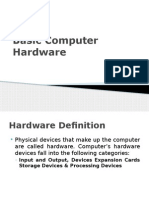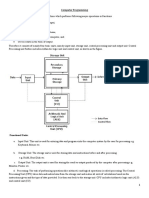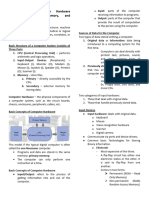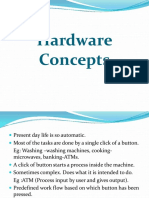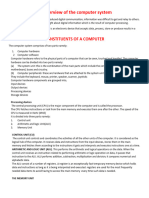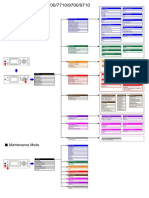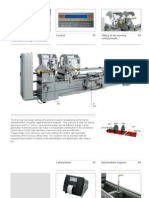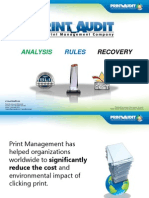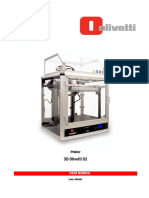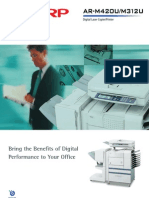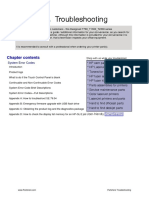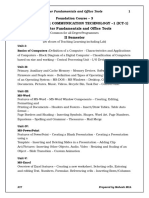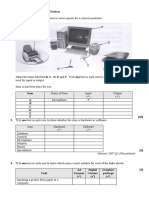0% found this document useful (0 votes)
19 views29 pages001 Computer System Organization
A computer is an electronic device that processes input data according to a program to produce output. It consists of key components including the Central Processing Unit (CPU), memory (both primary and secondary), and various input and output devices. The document outlines the functions of computers, types of memory, and examples of input/output devices.
Uploaded by
anitaparmar1493Copyright
© © All Rights Reserved
We take content rights seriously. If you suspect this is your content, claim it here.
Available Formats
Download as PDF, TXT or read online on Scribd
0% found this document useful (0 votes)
19 views29 pages001 Computer System Organization
A computer is an electronic device that processes input data according to a program to produce output. It consists of key components including the Central Processing Unit (CPU), memory (both primary and secondary), and various input and output devices. The document outlines the functions of computers, types of memory, and examples of input/output devices.
Uploaded by
anitaparmar1493Copyright
© © All Rights Reserved
We take content rights seriously. If you suspect this is your content, claim it here.
Available Formats
Download as PDF, TXT or read online on Scribd
/ 29


























